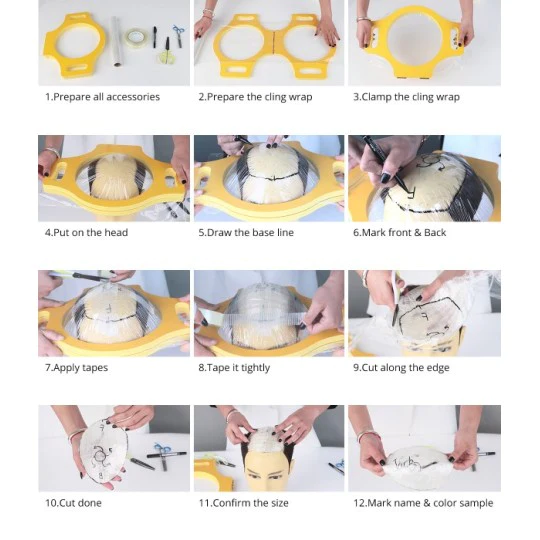Hair loss is a significant concern affecting a substantial portion of the global population. Identifying the causes of hair loss can be challenging due to their variety and complexity. Fortunately, numerous solutions are available to address hair loss, aiming to restore a full and healthy head of hair.
What is Alopecia Areata?
Alopecia areata is a condition marked by hair loss from specific areas of the body, typically resulting in small, round bald spots on the scalp, often the size of a coin. This condition, also known as spot baldness, can occasionally lead to complete hair loss on the scalp or even the entire body, though these outcomes are less common. Unlike the typical pattern of male baldness, alopecia areata presents uniquely.
Symptoms of Alopecia Areata
The primary symptom of alopecia areata is patchy hair loss, most commonly occurring on the scalp but also affecting other areas such as the beard, eyelashes, and other body parts. These patches are usually round or oval. Hair loss can happen rapidly, within days or weeks, often accompanied by itching or burning sensations in the affected areas. However, the hair follicles typically remain undamaged, allowing for potential regrowth if the follicle inflammation subsides. While many people recover from alopecia areata without treatment, about one-third experience extensive and ongoing hair loss.
In most cases, hair near the edges of the patches can be easily pulled out, indicating active immune system attacks on the follicles. It's important to note that other health issues can also cause similar hair loss patterns, so additional diagnostic methods may be necessary.
In rare cases, patients may experience complete scalp hair loss (alopecia totalis) or loss of all body hair (alopecia universalis). Hair loss in alopecia areata is unpredictable, with varying degrees of hair loss and regrowth among individuals.
Causes of Alopecia Areata
Alopecia areata is primarily seen as an autoimmune disorder where the body's immune system attacks its own anagen hair follicles, halting hair growth. Normally, hair follicles are protected from immune attacks by immune privilege.
The loss of this protection triggers alopecia areata.
Genetics play a significant role, as the condition is more common in individuals with a family history of alopecia areata or other autoimmune diseases like rheumatoid arthritis, type 1 diabetes, and celiac disease. Other associated risk factors include Down's syndrome, thyroid disease, and vitiligo.
Alopecia areata can affect otherwise healthy individuals and typically presents in early childhood, late teenage years, or young adulthood, though it can occur at any age. There is a slightly higher prevalence of immune-related conditions, such as asthma, allergies, atopic dermatitis, and hypothyroidism, among patients with alopecia areata. Ethnicity also influences the incidence rate, with higher occurrences in African American and Hispanic females compared to white females, and lower risks among Asians.
Diagnosing Alopecia Areata
Alopecia areata is usually diagnosed through clinical examination of the hair loss patterns and microscopic analysis of hair from affected areas. If necessary, a skin biopsy or blood tests may be conducted to exclude other autoimmune diseases. Given its distinctive symptoms, diagnosing alopecia areata is often straightforward and quick.
Treatments for Alopecia Areata
Currently, there is no definitive cure or preventive treatment for alopecia areata. However, certain treatments can promote hair regrowth and manage symptoms. Corticosteroid medications like clobetasol and fluocinonide, administered through injections, topical ointments, or orally, can suppress the immune response and reduce inflammation. Other medications such as Minoxidil, SADBE, Anthralin, and mometasone may also stimulate hair growth. It's crucial to consult healthcare professionals before starting any treatment due to potential side effects.
While treatments can be effective, they may not work for everyone. Some patients with alopecia areata associated with celiac disease experience hair regrowth with a gluten-free diet, likely due to the normalization of immune response.
Alopecia areata is neither contagious nor typically associated with illness, but it can be emotionally challenging. Addressing the psychological impact is essential for many individuals coping with the condition.
Customized Hair Patches for Alopecia Areata
Hair patches, also known as hairpieces or toupees, offer an effective, non-invasive solution for covering bald spots and achieving a full head of hair. Made from either real human hair or synthetic hair, these patches provide immediate results without the side effects associated with medications.
Customizing a hair patch involves accurately measuring the hair loss area to ensure a perfect fit. Here’s a guide to measuring and creating a template for both regular and irregularly shaped bald spots:
Tools Needed:
- Plastic wrap
- Marker
- Tape
- Scissors
- Measuring tape
Steps:
- Cover the Head: Remove a portion of plastic wrap and cover the entire head firmly.
- Mark the Area: Use a marker to outline the hair loss area on the plastic wrap.
- Apply Tape: Attach pieces of tape over the outlined area until it is fully covered. Multiple layers will add sturdiness.
- Create Template: Remove the plastic wrap and cut along the drawn lines to create a template.
With the template, a customized hair patch can be crafted to match the wearer’s hair length, color, and style preferences, providing a natural and personalized look.
For Professional Customization: Ouxun Hair offers top-quality, customizable hair patches made from 100% real human hair. For more information or to order a custom hair patch, contact us at info@ouxunhairs.com.
Post time: Jul-03-2024










